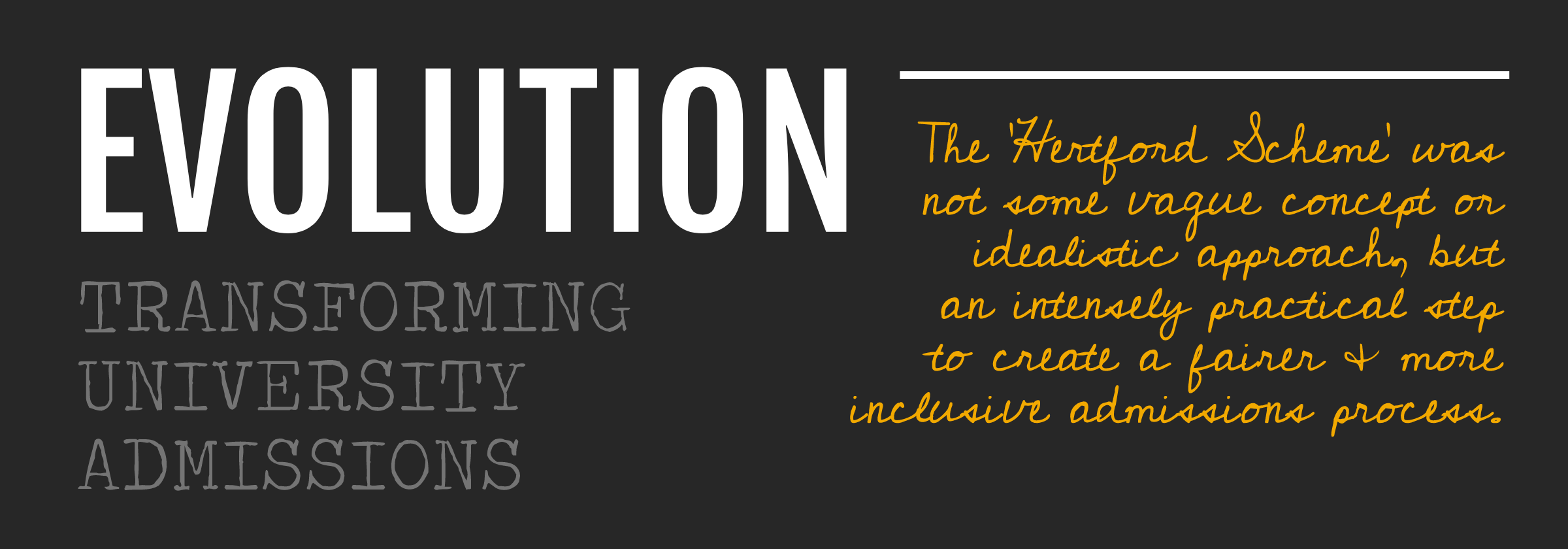The Tanner scheme
Neil Tanner joined Hertford as a Tutor in Physics in 1960, and became Tutor for Admissions in 1965.
Neil had received a scholarship himself to study at Cambridge in 1953 and, coming from a relatively poor Australian family, Neil understood the difficulties faced by less wealthy students in accessing higher education.

When Neil became Tutor for Admissions at Hertford in 1965, the admissions process overwhelmingly favoured applicants from public schools. Applicants had to sit an Oxford entrance exam, which required the candidate to take an extra term at sixth form to sit. Neil spoke to headteachers who told him that their students simply couldn’t spend that extra term at school, nor could they afford extra tutoring to prepare.
In light of this, Neil developed the ‘Hertford scheme’ (thereafter known by many as the ‘Tanner scheme’). Along with college fellows Peter Ganz and Jim Murray, Neil visited state grammar schools which had never before sent any candidates to Oxford, asking their headmasters to put forward their best pupils. These pupils were then interviewed early, outside the standard application process, and could be offered a place at Hertford without having to sit the exam. The offers they received in those early days were usually Es at A-level.
Neil, supported by Hertford’s Governing Body, was determined to level the playing field, giving state-schooled students a realistic chance of an Oxford education at a time when their presence at the university was virtually non-existent.
He also appreciated the academic benefit this would bring to the college, by attracting bright students who hitherto hadn’t considered Oxford. While the college had suffered from poor academic performance in the early 1960s, in just a few years the college rocketed from the bottom to the top of the collegiate rankings, with the highest number of firsts and seconds combined of any college throughout much of the late 1960s.
As large numbers of grammar schools became comprehensive, Hertford’s reputation as ‘state-school-friendly’ enabled it to attract a large comprehensive school intake, which in turn attracted the attention of the press and gave Hertford its ‘progressive’ reputation.
While at first the scheme wasn’t popular within Oxford – at one point the university threatened to disassociate Hertford for unfairly ‘poaching’ the best students – over the years that followed Hertford scheme became widely emulated and admired within the university as a whole.
In 1984, new university rules created uniformity across college admissions, forcing an end to the scheme. This was a great blow to Hertford, but especially to Neil who had evolved such a successful system over 21 years. The Vice-Principal of the time criticised the move as removing the one truly successful access scheme that Oxford had developed over the preceding years.
However, the success of the scheme led to other Oxford colleges re-assessing their traditional admission methods and laid the groundwork for much of the outreach and access work that takes place today.
Hertford remains committed to increasing the diversity of its intake, and continues to work towards these ends.
Read more…
Follow the links below to read Neil Tanner’s speech from the 1970s about the ‘Hertford Scheme’ and the 2018 Tanner Research Project, a comprehensive history of the scheme by Professor Lawrence Goldman.

